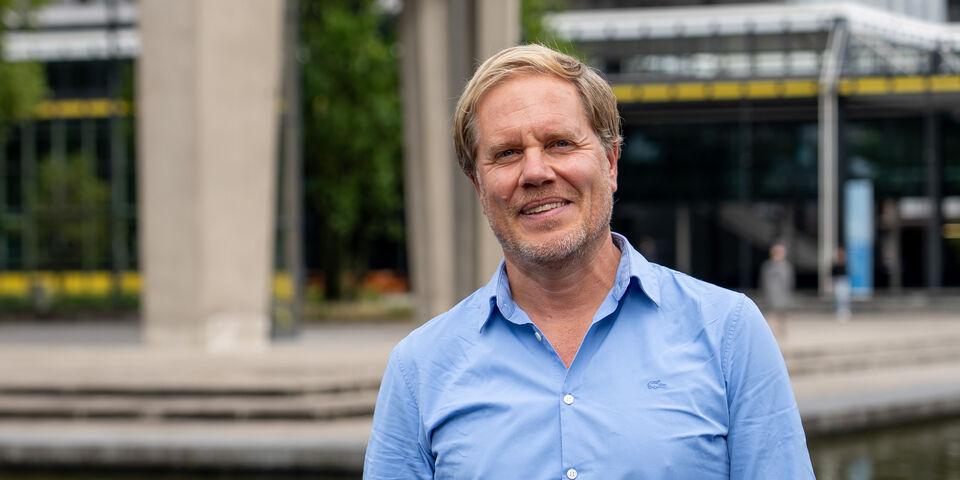Change manager: “CEC will become a network organization”
If it’s up to the interim director of the Communication Expertise Center, CEC will cease to exist as a TU/e service and instead become a network organization. Change manager Pim van Zanen, appointed in June, presented this idea to staff this week. “The most important thing is that we put our target groups at the center, not the organization.”
What assignment did you receive from the Executive Board?
“I was asked to design a new network structure for TU/e’s marketing and communication as part of its future plans, which aim to work with fewer services and directors. After many introductory meetings and discussions with CEC’s management members and team leaders, there is now a proposal to shape marketing communication through target group teams within a network organization, and to discontinue CEC as a service. The formal decision-making still has to take place.”
What does a network organization mean, and what are the advantages?
“It means that we don’t concentrate our marketing and communication expertise and capacity in a single department, but distribute them across the organization. This way, we can work more closely with domains and processes, while ensuring that all communication professionals remain connected. The domains are strategy and community engagement (General Affairs), education and students (Education and Student Affairs), staff and leadership (Human Resources), and research and valorization (Research Support Valorization).
This structure allows us to better attract and serve our eleven target groups, ranging from prospective students to potential collaboration partners. We put the target groups at the center, not TU/e as an organization.”
How does this proposal fit into SQUAD, TU/e’s five-year operation aimed at improving the quality of support services?
“For CEC, SQUAD is in its final stage. I incorporated the improvement points that emerged there into this new proposal. The perceived lack of clarity and structure can be addressed through a target group approach. The idea that originated within SQUAD—to work with chains starting from the target group and enabling services to collaborate more integrally—also fits seamlessly into this new model.”
Will there be a place for every CEC staff member?
“Yes. The new structure is not intended to result in forced layoffs. Which positions are needed and which people will fill them still has to be worked out. The only firm principle is that there will be no new director position.
It’s also not yet clear where the physical location for communication and marketing staff will be.”
At TU/e we’ve already seen the shift from a centralized communication department to a decentralized one – and back again. Why is the university moving toward decentralization once more?
“That’s not the way to look at it. We’re going to work with a different model, an integrated model.”
How do the departments view the plan?
“On September 30, we’ll discuss it with all managing directors, as they are responsible for marketing communication within their departments. The plan places departments, institutes, and alliances at the center, because their education and research form TU/e’s primary process. Marketing communication is there precisely to support that primary process. That’s the essence of the target group approach in this new model.”
The decision hasn’t been made yet, but you think the chances are slim that the move to a network organization won’t happen. Are CEC staff facing a done deal, or can they still provide input?
“Input on the implementation is very welcome. We want to hear from both central and decentralized communication staff where opportunities lie and what we should take into account. How do we make sure the network is active and visible? That’s a question that still needs to be answered. Anyone who comes forward with strong arguments to do things differently will be given the space to be heard.”
This article was translated using AI-assisted tools and reviewed by an editor.


Discussion